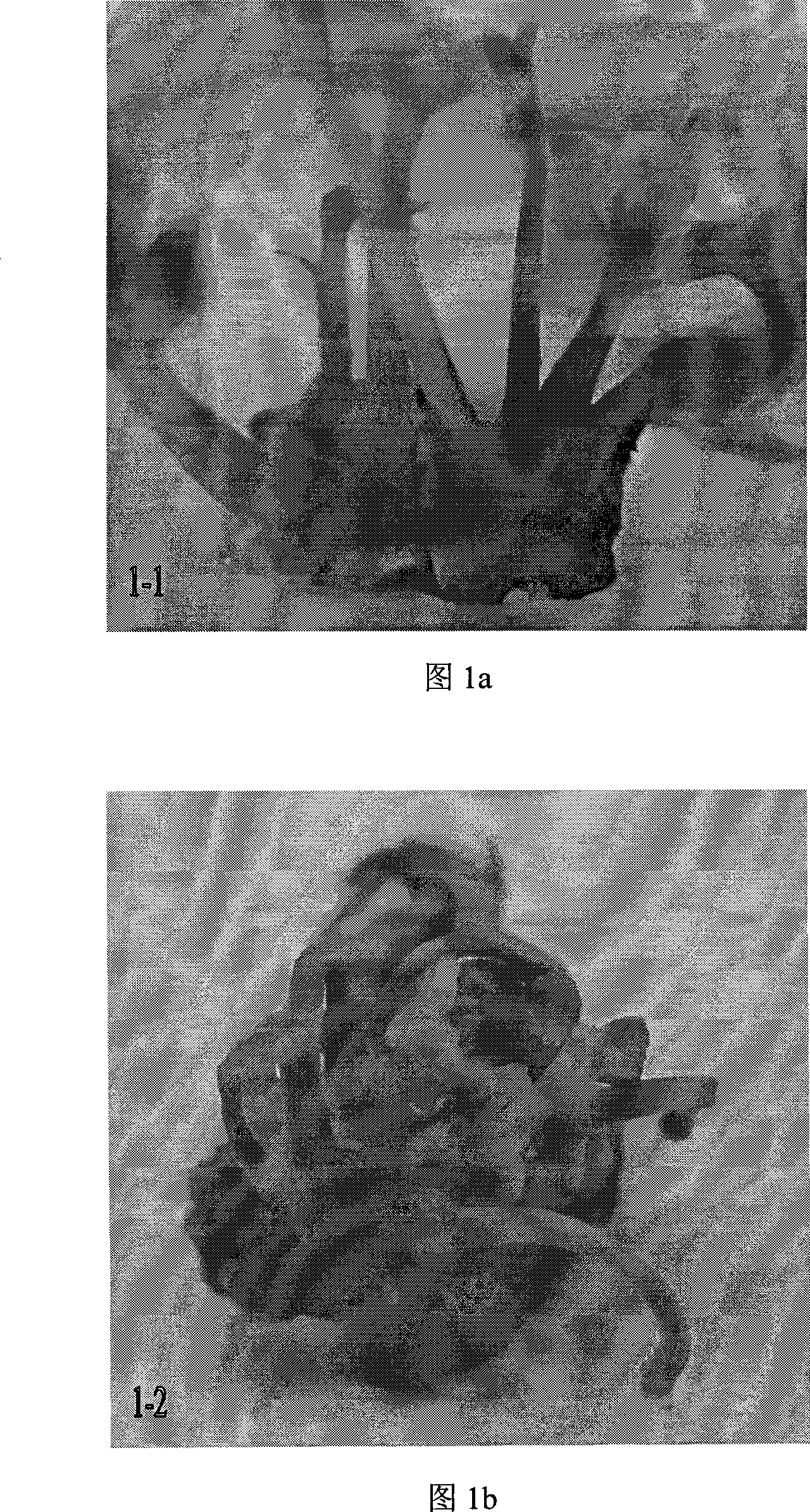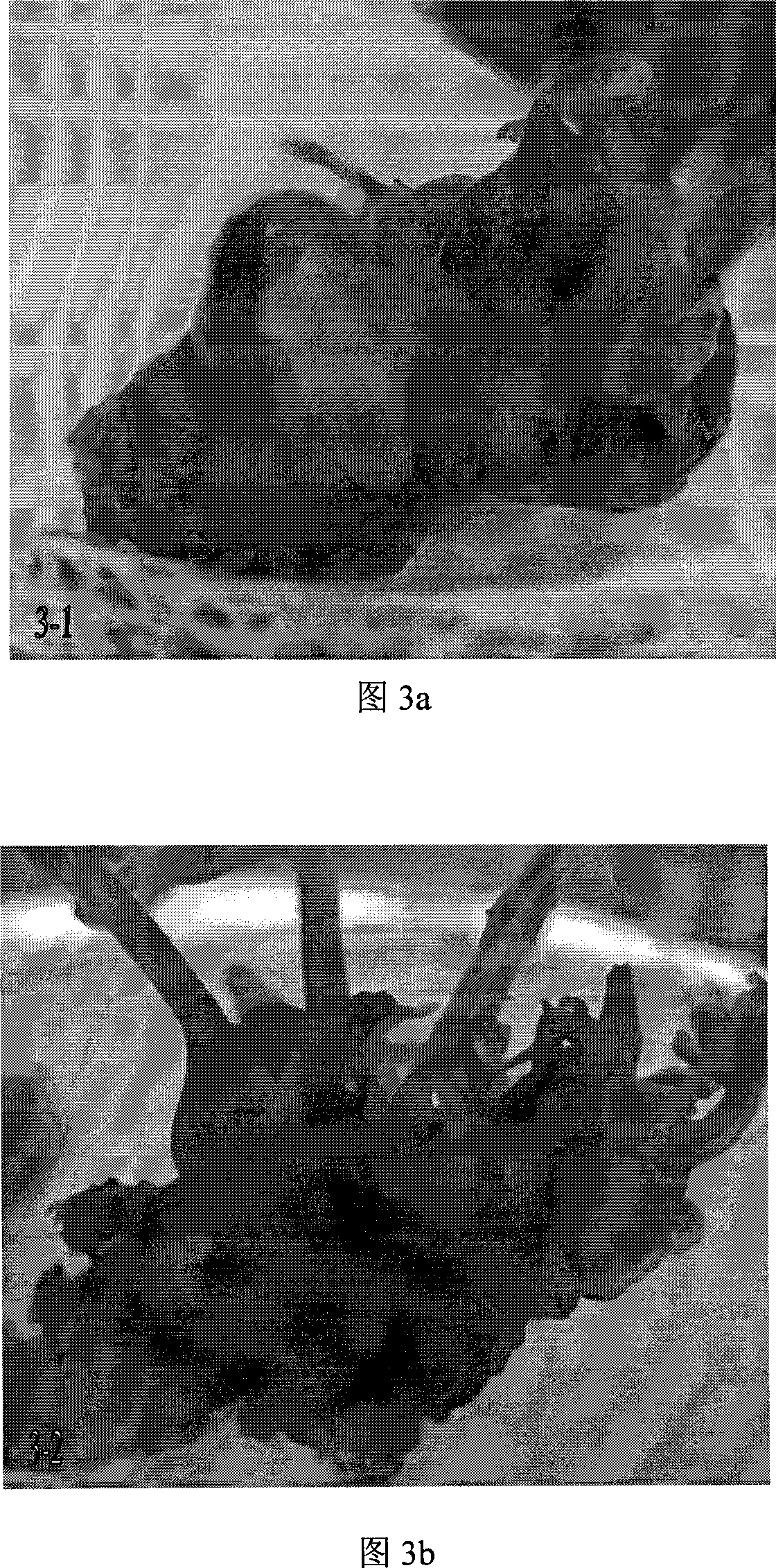Vitro quick di-wu breeding method
A kind of Diwu, rapid technology, applied in the field of plant tissue culture, can solve the problems such as the depletion of Diwu wild resources, low vitality of Diwu seeds, and the rapid propagation of Diwu has not been reported, and achieve good proliferation effect and somatic embryo differentiation rate Significant, significant effect of pseudocorm induction rate
- Summary
- Abstract
- Description
- Claims
- Application Information
AI Technical Summary
Problems solved by technology
Method used
Image
Examples
Embodiment 1
[0034] Embodiment 1 (general culture program)
[0035] A method for in vitro rapid propagation of ground crow, the steps are as follows:
[0036] (1) Selection and disinfection of explants:
[0037] 1) select the dormant buds with the length of 1-2cm of the old tissue of the Rhizome of Rhizome and the unexpanded leaves of the just germinated as explants;
[0038] 2) The explant is sterilized by the following method:
[0039] a. Disinfection of explants as dormant buds: first wash off the silt on the surface of the buds of the root of the root of the root of the root of the root, and use a soft brush to clean the dead tissue on the surface of the shoot of the root of the root of the root until the bud appears white. Soak in 1.5% carbendazim aqueous solution for 2 hours, rinse with tap water for 0.5 hours, transfer to ultra-clean workbench, disinfect with 75% alcohol for 30-60 seconds, rinse with sterile water for 1-2 times, and then use 0.2% mercuric chloride solution Disinf...
Embodiment 2
[0074] Test material selection, medium design and inoculation culture
[0075] 1. Sources and processing of experimental materials
[0076] The rhizomes of wild black root from Machi Tonggubao, Changyang Tujia Autonomous County, Hubei Province, at an altitude of about 1,800 meters were selected as test materials. Before use, use the method introduced by the applicant's prior invention patent application (patent application number: 200810047075.X, publication number: CN101243741, title of invention: the method for removing the dormancy of the rhizome of the Radix Rhizome) of the applicant. It germinates, grows, and provides explants for testing. The selection criteria and induction results of Diwu explants are shown in Table 1:
[0077] Table 1 Selection and induction results of suitable explants for in vitro propagation of Diwu
[0078]
[0079] Table 1 shows that the Radix Radix bud body is the best explant of the present embodiment, followed by the unexpanded Radix Rad...
Embodiment 3
[0095] Effects of Different Concentrations of Naphthaleneacetic Acid (NAA) on In vitro Propagation
[0096] In plant tissue culture, 6-BA is a widely used auxin growth regulator. It is recognized as an effective auxin for initiating cell dedifferentiation to form callus or organogenesis.
[0097] After cultured for 2 weeks, white and transparent callus tissue can be seen from the incision. After subculture once in 30 days, and after 2 subcultures, three different regeneration tissues can be seen, namely, adventitious buds, pseudocorms and Somatic embryos correspond to three different regeneration pathways, adventitious bud regeneration pathway, pseudocorm regeneration pathway and somatic embryogenesis pathway. It was observed that when the concentration of 6-BA was 2.0mg / L, the concentration change of NAA would lead to the occurrence of different regeneration pathways,
[0098] Table 3 Effects of different concentrations of NAA on Diwu propagated in vitro
[0099]
PUM
| Property | Measurement | Unit |
|---|---|---|
| length | aaaaa | aaaaa |
Abstract
Description
Claims
Application Information
 Login to View More
Login to View More - R&D
- Intellectual Property
- Life Sciences
- Materials
- Tech Scout
- Unparalleled Data Quality
- Higher Quality Content
- 60% Fewer Hallucinations
Browse by: Latest US Patents, China's latest patents, Technical Efficacy Thesaurus, Application Domain, Technology Topic, Popular Technical Reports.
© 2025 PatSnap. All rights reserved.Legal|Privacy policy|Modern Slavery Act Transparency Statement|Sitemap|About US| Contact US: help@patsnap.com



